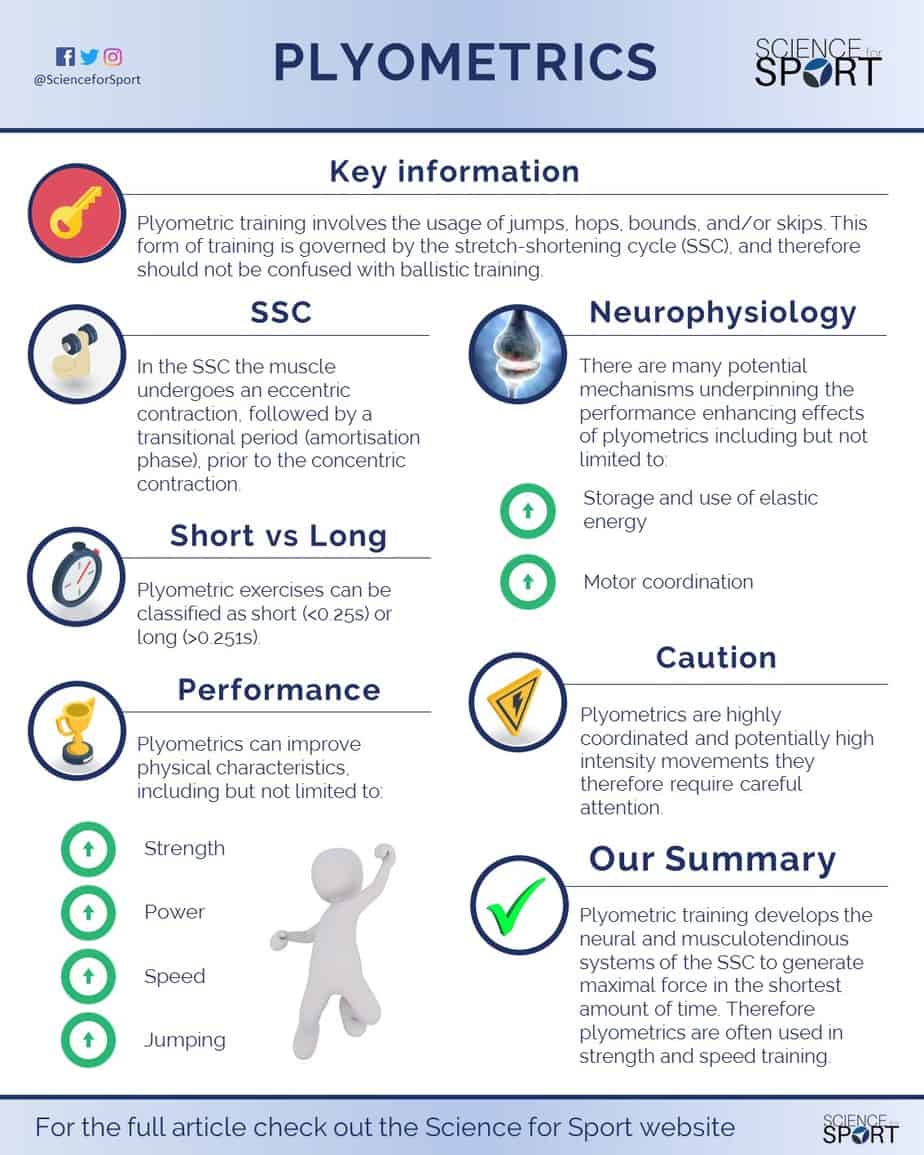
What Precautions Should Individuals Take Before Starting a Plyometric Training Program?
Plyometric training, often referred to as “plyo” or “jump training,” is a high-intensity form of exercise that focuses on explosive movements to increase power, strength, and athletic performance. While plyometrics can deliver remarkable benefits, it’s essential for individuals to take certain precautions before embarking on a plyometric training program to ensure safety and optimize results. In this comprehensive article, we will delve into the world of plyometric training and outline the precautions individuals should consider before getting started.
Understanding Plyometric Training
Plyometric exercises involve rapid and forceful contractions of muscles, typically in response to a rapid stretching of those muscles. These exercises are designed to improve the stretch-shortening cycle of muscles, which is crucial for enhancing speed, agility, and power. Common plyometric movements include jumping, hopping, bounding, and various explosive bodyweight exercises.
Precautions Before Starting a Plyometric Training Program
1. Consult a Healthcare Professional
Before beginning any new exercise program, especially one as demanding as plyometrics, it’s crucial to consult with a healthcare professional. A thorough physical examination can help identify any pre-existing medical conditions, joint issues, or other factors that might affect your ability to engage in plyometric training safely.
2. Establish a Solid Foundation
Plyometric training is advanced and intense, so individuals should have a reasonable level of fitness and strength before starting. It’s advisable to engage in a well-rounded fitness program that includes cardiovascular conditioning, strength training, and flexibility exercises before incorporating plyometrics.
3. Warm-Up Properly
A thorough warm-up is essential to prepare the body for the demands of plyometric exercises. Spend at least 10-15 minutes performing dynamic stretches, light aerobic exercises, and mobility drills to increase blood flow, warm up muscles, and reduce the risk of injury.
4. Proper Footwear and Surface
Ensure you have appropriate footwear with adequate cushioning and support to absorb impact during plyometric exercises. Additionally, perform plyometrics on a surface that provides some shock absorption, such as a rubberized floor or exercise mat, to reduce the risk of joint and muscle strain.
5. Start with Basic Movements
Begin with fundamental plyometric exercises to build a strong foundation. Basic exercises like squat jumps and standing long jumps help develop proper technique and minimize the risk of injury associated with more complex movements.
6. Progress Gradually
Plyometrics should be introduced gradually into your fitness routine. Start with low-intensity exercises and progress to more challenging movements as your strength and technique improve. Overtraining and excessive intensity can lead to overuse injuries.
7. Focus on Proper Technique
Correct form is essential in plyometric exercises to prevent injuries and maximize effectiveness. Pay close attention to landing mechanics, ensuring that you land softly with knees bent and hips back to absorb shock and reduce the risk of knee injuries.
8. Rest and Recovery
Give your body adequate time to recover between plyometric sessions. These high-intensity workouts place significant stress on the muscles and joints, so allowing ample time for recovery is crucial to prevent overuse injuries.
9. Listen to Your Body
Plyometrics should challenge your limits, but it’s equally important to listen to your body. If you experience pain, discomfort, or excessive fatigue, it’s essential to rest and seek guidance from a fitness professional or healthcare provider.
10. Stay Hydrated and Maintain a Balanced Diet
Proper nutrition and hydration are crucial for any exercise program. Plyometric training requires a significant amount of energy, so ensure you’re adequately fueling your body with a balanced diet and staying hydrated before, during, and after your workouts.
Conclusion
Plyometric training can be a highly effective way to improve athletic performance and overall fitness. However, it’s essential to approach this form of exercise with caution and respect for your body’s limitations. By consulting a healthcare professional, building a solid fitness foundation, warming up properly, using the right equipment, starting with basic movements, progressing gradually, and focusing on technique, individuals can reduce the risk of injury and achieve the best results from their plyometric training program. Remember, safety should always be a top priority when engaging in any exercise regimen, and plyometrics are no exception.



